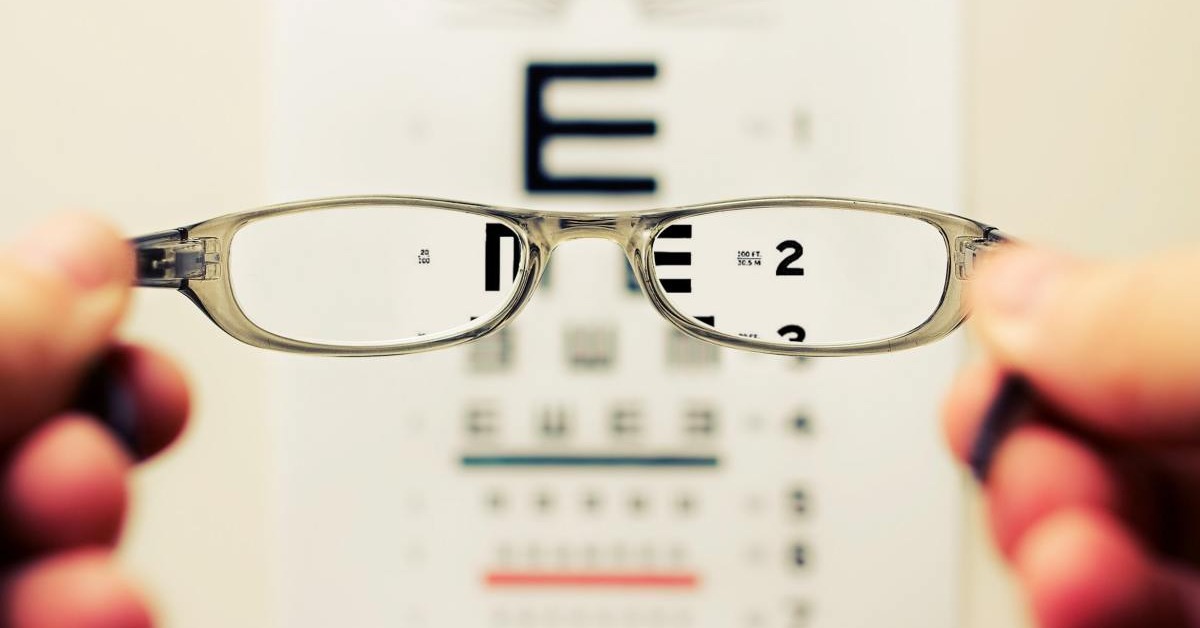
Why Become a Sports Vision Optometrist?
Sports vision optometrists work with patients at all levels, including [...]

Studies indicate that 80 percent of the information humans take in—i.e., the learning process—comes through the visual pathway. That’s why the fact that one in four K-12 students experiences vision issues is no small matter. For many, correcting visual impairment is critical to classroom learning and, consequently, their futures.
Poor vision can impact not only learning potential but also emotional health. Studies show that children who face issues with reading materials, completing workbooks, or even seeing the whiteboard in a classroom can face anxiety and depression that might be easily remedied with a visit to the optometrist.
Whether a future optometrist plans to work in pediatric optometry or another branch of the field, earning a Doctor of Optometry degree provides the training needed treat such conditions as nearsightedness, amblyopia, refractive errors, and other common visual impairments. While optometrists do not perform surgeries–ophthalmologists, who possess MD credentials, handle surgical interventions–they nonetheless fill a critical medical role.
What is a Doctor of Optometry? This guide explores that question and also discusses”
Doctor of Optometry (OD) programs instill the knowledge and competencies needed to practice this form of vision medicine. Most take four years to complete, after finishing prerequisite requirements. Open to learners who complete at least 90 undergraduate credit hours (these must include required science-based prerequisites), OD programs provide both classroom and clinical training for a well-rounded education.
After graduating, individuals with Doctor of Optometry credentials work as optometrists in myriad settings. Day-to-day work involves performing eye examinations, diagnosing sight issues, prescribing visual aids, and counseling patients on eye health. These professionals may also diagnose more serious visual issues such as macular degeneration and provide treatments when necessary. Their examinations may even reveal larger systemic conditions, such as high blood pressure or diabetes.
To become a Doctor of Optometry, plan to commit at least seven years to higher education. Students who know they want to follow this path typically earn a bachelor’s degree in a premedical field such as physical science or biology. This proves beneficial when applying to OD programs, as most require such coursework. At New England College of Optometry (NECO), for example, applicants to the Doctor of Optometry program must have completed two semesters each of biology, chemistry, and physics (all with labs) as well as one semester each of biochemistry, microbiology, calculus, statistics, and psychology.
After completing OD requirements, students looking to gain specialist knowledge participate in a residency program. These can include pediatric optometry, ocular disease, general practice, and low-vision rehabilitation.
Doctor of Optometry programs typically require four years of full-time study after completing an undergraduate degree. At NECO, students devote their first year to establishing the fundamentals of optometry practice before deepening their understanding during year two. Third year students participate in direct patient care and prepare for the National Board of Examiners in Optometry examination. The final year focuses on completing clinical rotations in areas such as primary, advanced, and specialty care.
Admission requirements vary from program to program, so carefully review each program you consider to ensure you meet minimum mandates. In some cases, learners with at least three years of college (90 credits) can gain early admission to a Doctor of Optometry program and bypass the final year of their bachelor’s degree. At Indiana University, early admission candidates must hold at least 90 college credits from a list of required courses, as well as 18 total credits in arts and humanities, foreign language, and social and historical studies. They must also possess a cumulative GPA of 3.6 or higher.
Students who decide to go the traditional route and complete their bachelor’s degree first must still meet all prerequisite requirements before gaining admission. Most programs also require learners to provide test scores from the Optometry Admission Test (OAT) or the Graduate Record Examination (GRE), although some have made this step optional in recent years.
Many schools use the Optometry Centralized Application Service (OptomCAS), which functions similarly to the CommonApp by allowing students to send one application to multiple OD programs. As part of the OptomCAS process, students submit transcripts from all schools previously attended, recommendation letters, a personal statement, and a resume. Candidates must also pay individual application fees to each school.
Doctor of optometry programs provide a rigorous education focused on graduating well-rounded optometry professionals who can work in generalist, specialty, or subspecialty roles. Because undergraduate optometry programs do not exist, the first year of an OD builds foundational skills around primary eye care, eye diseases, visual optics, and ocular biology. The second year continues along the same path, with learners expanding their understanding around ocular pharmacology, ophthalmic dispensing, and integrative optometry.
Third year students put their knowledge into action by working directly with patients to address issues such as glaucoma, cataracts, and other vision programs. They also build skills in general vision care, including performing eye exams, fitting patients for eyeglasses and contact lenses, and correcting other vision problems. The final year sees learners participating in externships under the supervision of a licensed optometrist. These experiences provide the opportunity to try out different specialty areas and figure out which field of vision healthcare to pursue after graduating.
Regardless of where you plan to live or practice, all states require optometrists to gain licensure. In addition to graduating from an accredited OD program, prospective optometrists must also pass the four-part National Board of Examiners in Optometry exam. Some states may also require additional clinical or theoretical exams. After earning their licenses, optometrists must participate in continuing education and renew their licenses periodically based on state board requirements.
According to the Bureau of Labor Statistics, optometrists earned median annual incomes of $124,300 as of 2021. Those in the top 10 percent of professionals made in excess of $192,390 each year, while those in the bottom 10 percent took home less than $61,490 during the same period.
Multiple factors influence earning potential, including years of experience, employer type, title, and location. Optometrists practicing in Connecticut currently earn the highest annual mean wage at $155,070 followed by those in Maryland ($144,570), Alaska ($143,260), North Carolina ($141,140), and Louisiana ($138,520).
The United States currently has 23 optometry programs offered throughout the country; until recently, all of these schools provided only campus-based OD programs. In November 2021, the New England College of Optometry signaled its intent to become the first hybrid Doctor of Optometry program in the country. 33 states currently offer no OD programs; a hybrid degree can help extend degree availability to students across the country. While the program is still working towards accreditation, departmental leadership anticipates a fall 2023 launch. Students enrolling in this program can work with approved clinical partner sites throughout the nation to take advantage of many opportunities for meaningful, hands-on experience.
Questions or feedback? Email editor@noodle.com

Sports vision optometrists work with patients at all levels, including [...]

Future health professionals considering the field of eyecare may well [...]

American students can choose from among 24 accredited Doctor of [...]

Cornea and contact lens optometrists are highly educated practitioners; they [...]

Roughly one in four optometry students pursue a residency after [...]
Categorized as: Optometry, Nursing & Healthcare